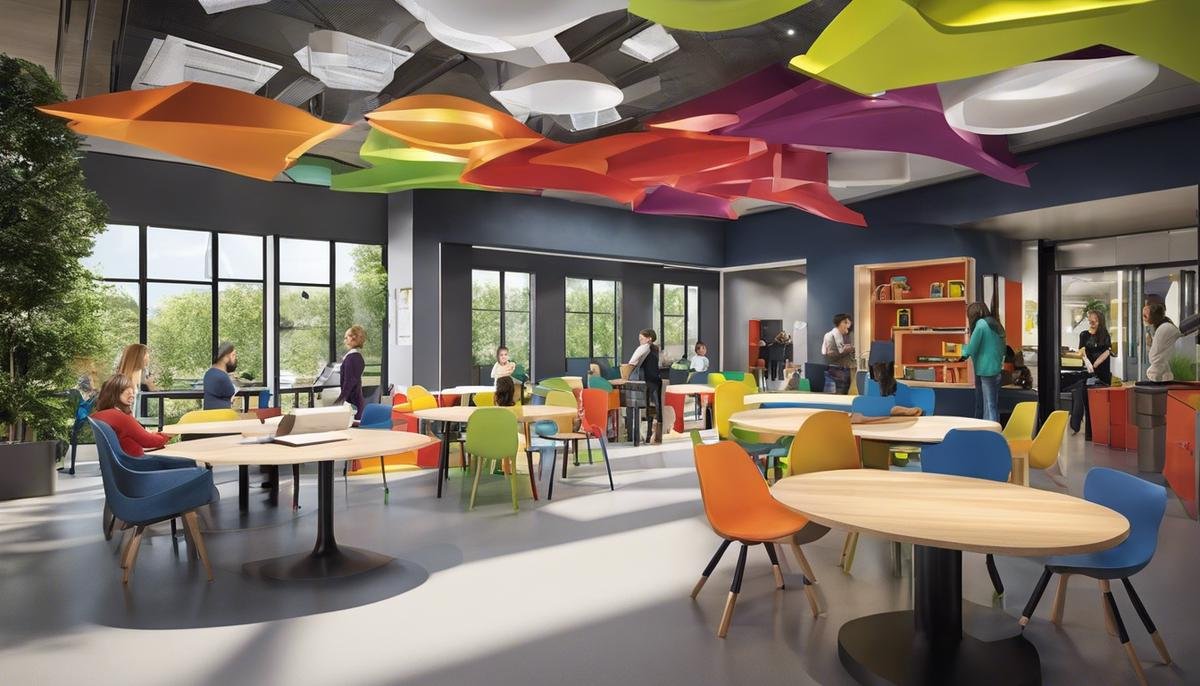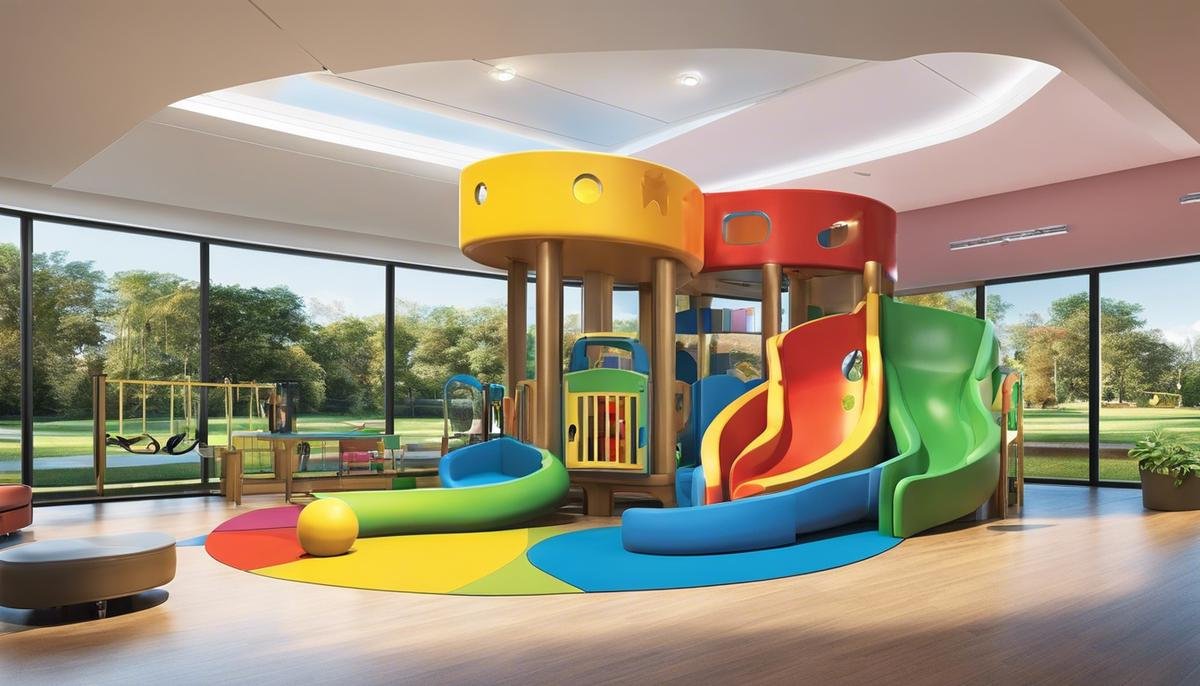
The world as we perceive it is a mosaic of sensations and stimuli, but for individuals on the autism spectrum, the vividness and intensity can be magnified, leading to experiences that are uniquely challenging. Understanding Autism Spectrum Disorder (ASD) is pivotal in discerning the myriad ways our environment can either foster a sense of security or, conversely, evoke distress. By delving into the intricacies of ASD, we embark on a journey toward empathy and innovation—a journey that seeks to craft environments that are not just inclusive, but genuinely nurturing. This narrative begins with a quest for knowledge, one that transcends mere awareness and ardently strives to fathom the sensory, cognitive, and social dimensions that define the autism experience.
Understanding Autism Spectrum Disorder (ASD)
Understanding Autism Spectrum Disorder: Embracing Unique Minds
Hey there, lovely parents and guardians!
Tackling parenting challenges is a daily adventure, and part of that is gaining knowledge about the various aspects that can impact our families. Today, let’s unwrap the layers of Autism Spectrum Disorder (ASD) with the same warmth we’d share over a steamy cup of cocoa on a crisp fall evening.
First off, ASD is a complex developmental condition that involves persistent challenges in social interaction, speech and nonverbal communication, and restricted/repetitive behaviors. Picture a spectrum—like the colors of the rainbow—where each individual with autism shines with a distinct hue of abilities and characteristics. No two people with ASD are exactly alike, and this diversity calls for a deep well of understanding and patience.
Social interaction can often be a maze for individuals with ASD. Making eye contact might be tough, interpreting body language could be a puzzle, and engaging in conversations might feel like deciphering an ancient language. It’s important to remember this doesn’t reflect a lack of desire for connection but rather a different way of experiencing the world.
When it comes to speech and communication, the range is wide: some folks might be the life of the party with words, while others may speak very little or not at all. Regardless, each person has their own unique way of expressing themselves—sometimes it just requires us to listen a little differently.
And you know those little rituals that make our homes cozy and organized, like sorting the spices alphabetically? For an individual with ASD, certain routines or patterns can be incredibly soothing—a predictable harbor in the often chaotic ocean of daily life.
But let’s get one thing straight: being on the autism spectrum isn’t a deficit—it’s a different vantage point. People with ASD are as capable of love, success, and joy as anyone else. They bring fresh perspectives, unwavering focus, and often remarkable talents to the table. What they need from us is support, inclusion, and environments where they can thrive in their own unique ways.
So there you have it, dear ones. ASD is one thread in the tapestry of human diversity, and understanding it is just another step toward nurturing a family and community where everyone belongs. The world is richer for the incredible minds on the autism spectrum, and with each little bit of awareness, we’re building a more empathetic, vibrant, and welcoming community.

Consultation with Autistic Individuals and Experts
Creating Safe Spaces Together: Partnering with Autistic Individuals for Enhanced Safety and Comfort
When it comes to designing safety zones for individuals with Autism Spectrum Disorder (ASD), there’s a vital resource that can make all the difference—input from autistic individuals themselves. Consulting with those who understand the experience firsthand can transform a well-meaning initiative into a truly effective and welcoming environment. Here’s how reaching out and incorporating direct feedback can shape safer, more nurturing spaces.
Involve Autistic Individuals in Design and Planning Stages
Early involvement is key. Reach out to autistic individuals and advocacy groups during the initial design phase. By doing so, they can provide insights into specific needs and preferences that may not be immediately apparent to others. You’ll gain perspectives on everything from sensory concerns to spatial arrangements, ensuring the safety zone is both comfortable and functional.
Prioritize Sensory-Sensitive Design
For many with ASD, sensory sensitivities can trigger stress or discomfort. Be proactive by consulting autistic individuals to identify potential sensory triggers within the safety zone. Perhaps fluorescent lighting causes discomfort, or the acoustics amplify noises excessively. By recognizing these factors, modifications such as using natural lighting, incorporating quiet zones, or selecting materials that reduce noise can create a more calming atmosphere.
Value Clear Communication and Visual Aids
Communication clarity is paramount in safety zones. Discuss with autistic collaborators how best to present information and directions clearly. They may suggest large, readable signs with straightforward language or the use of visual aids like pictograms. Providing information in multiple formats can ensure everyone can understand and follow safety protocols with ease.
Consider the Importance of Personal Space
Shared input may highlight a common need among individuals with ASD for personal space. Safety zones should cater to this by potentially offering private alcoves or designated areas where one can retreat if feeling overwhelmed. This simple adjustment promotes a sense of security and autonomy within the space.
Adapt for Varied Communication Needs
Open a dialogue about the varied communication styles of those with ASD. Safety zones should be staffed by individuals who are trained and comfortable with non-verbal communication cues or alternative communication methods like picture exchange systems. Interactive training and role-play scenarios can prepare staff to communicate effectively and respectfully with everyone who utilizes the safety zone.
Embrace Flexibility for Routine and Familiarity
Maintaining routines and familiar settings can be grounding for individuals with ASD. When altering or updating safety zones, seek advice from autistic individuals about how best to introduce changes without causing undue distress. A phased approach or providing advanced notice can help maintain a familiar environment while still accommodating necessary updates.
By earnestly consulting with autistic individuals, safety zones become more than just a space—they evolve into a true haven of comfort and assurance. It is this collaborative spirit that not only elevates the quality of the safety zones but also reinforces the message that everyone deserves to feel secure and supported in their environment. Together, through understanding and cooperation, society can craft spaces that celebrate diversity and foster a genuine sense of belonging for all individuals, regardless of how they experience the world.

Designing and Implementing Autism-Friendly Spaces
Designing autism-friendly safety zones is a rewarding journey that requires insight, compassion, and an eye for detail. Whether setting up a space at home, in schools, or within community centers, the goal is to create an environment where individuals with autism feel secure, understood, and valued.
Simplicity is Key – Keep it Minimal and Predictable
In creating safety zones, remember that less is often more. A minimalistic design reduces potential stressors and distractions. This approach caters to the preference for predictability and consistency often seen in individuals with autism. Opt for simple furniture arrangements and a calm color palette that is soothing rather than stimulating.
Visual Boundaries and Labels – A Navigational Compass
Use visual cues to establish clear boundaries within the space, ensuring people can identify where the zone begins and ends. This clarity provides a sense of security and control. Additionally, labeling items and areas with words or pictures can aid in navigation and decision-making, empowering individuals with autism to use the safety zone with greater independence.
Safety First – Secure and Supervised
Regular safety checks are imperative to ensure that the environment remains hazard-free. Secure furniture to prevent tipping, cover electrical outlets, and keep potential choking hazards out of reach. Supervision, when appropriate, provides reassurance, but always balance this with the individual’s need for autonomy.
Natural and Adjustable Lighting – Tailoring the Glow
Lighting can have a profound impact on comfort levels. Natural light is ideal, as it is less harsh than fluorescent lighting, which can be troubling for some individuals who are sensitive to light and noise. Adjustable lighting options also allow the user to modify the environment to suit their comfort level throughout the day.
Hygiene and allergens considerations – Keeping it Clean and Clear
High standards of cleanliness contribute significantly to creating a calming and healthy environment. Using non-toxic cleaning products and paying attention to air quality can prevent discomfort or health issues associated with allergens or strong scents that can be particularly disturbing for those with sensory sensitivities.
Community Building – Strengthening Relationships
A safety zone should also be a community-building zone that encourages interaction at a comfortable pace. Furnish with cozy, inclusive seating arrangements that allow for both social opportunities and individual space. Offer a selection of activities that can be enjoyed alone or together, fostering relationships while respecting boundaries.
Remember, the successful design of an autism-friendly safety zone hinges on a commitment to continuous learning and adapting. Recognizing the individuality of each person with autism is crucial as their needs may evolve. Embracing this dynamic process keeps these safe havens relevant, welcoming, and genuinely supportive.

Establishing safety zones for autistic individuals is an endeavor that transcends traditional design—it’s an ongoing dialogue woven with threads of understanding, respect, and human connection. At the heart of this enterprise is an acknowledgment of diversity and the bespoke nature of comfort for those on the spectrum. Fusing insights from lived experiences with expert guidance, we hold the power to devise spaces that are not only safe havens but also fortresses of dignity for autistic individuals. As we continue to shape these zones of solace and empowerment, we not only pay homage to the unique perspectives within the autism community but also enrich the tapestry of our collective human experience.




